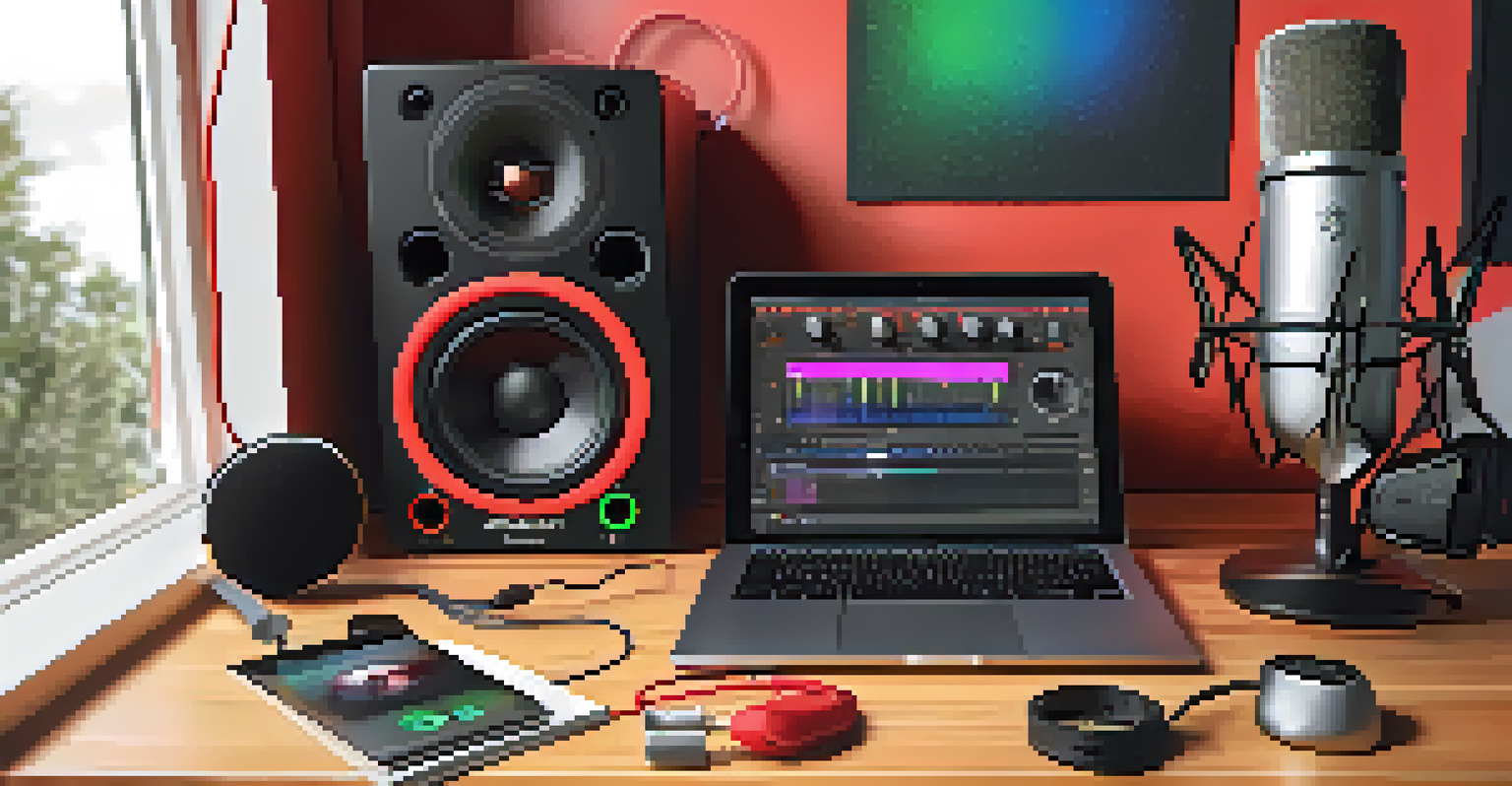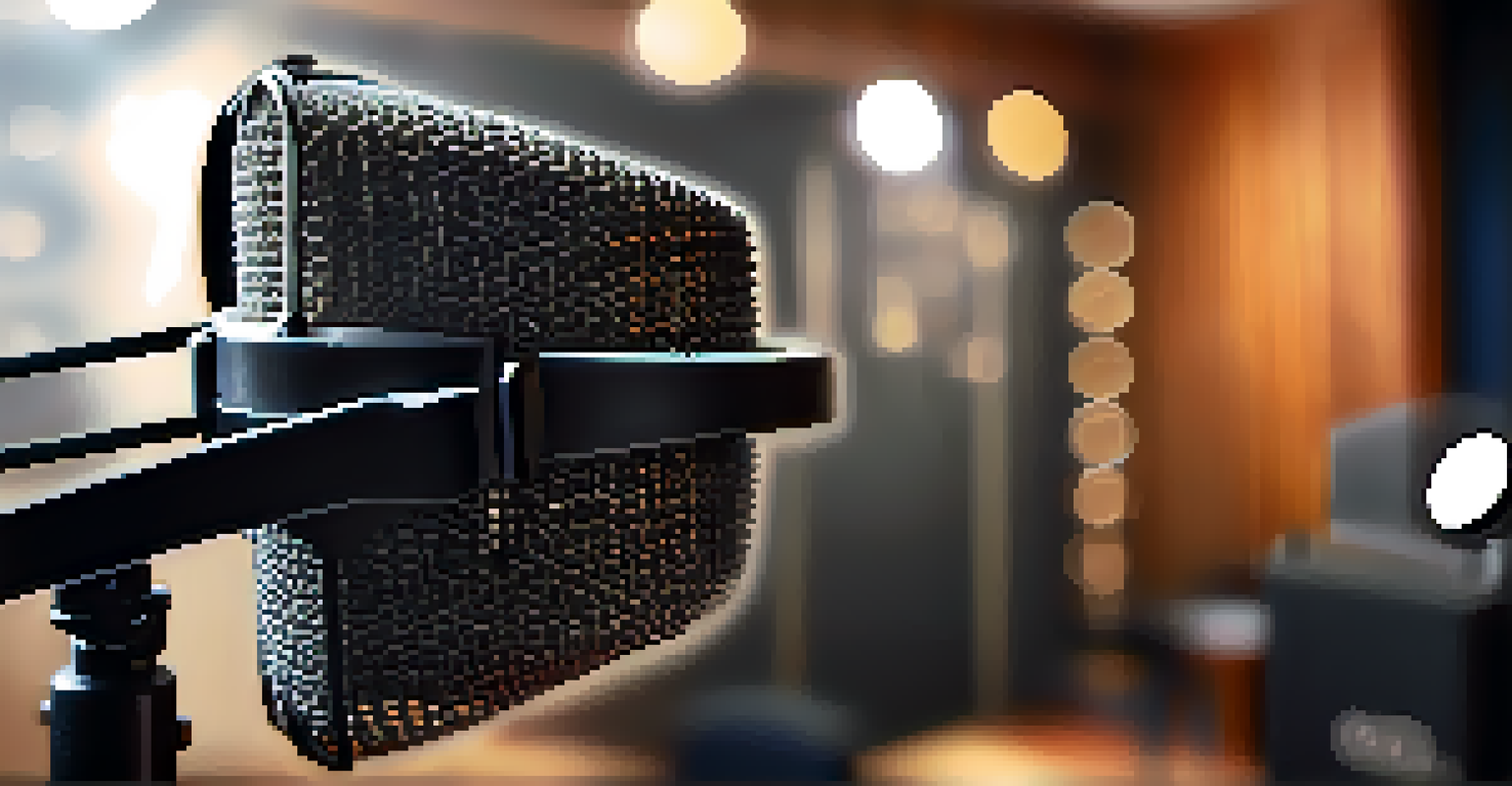Podcast Equipment Essentials: Must-Have Gear for Beginners

Understanding the Basics of Podcasting Equipment
Before diving into the world of podcasting, it's crucial to understand the essential equipment you'll need. Podcasting is all about delivering high-quality audio content to your audience, so investing in the right tools is key. Even as a beginner, having a solid foundation can set you up for success and make your podcast sound professional right from the start.
The most important thing in communication is hearing what isn't said.
You'll want to consider factors like audio quality, ease of use, and budget when selecting your gear. It's easy to get overwhelmed by the choices out there, but focusing on the basics can simplify the process. Remember, your goal is to create engaging content, and the right equipment will help you achieve that.
By understanding the basic needs of your podcast, you can make informed decisions about what to buy. This article will guide you through the must-have gear that every beginner should consider, ensuring that you’re well-equipped to start your podcasting journey.
Essential Microphones for Beginner Podcasters
One of the most important pieces of equipment for podcasting is the microphone. A good microphone can significantly improve your audio quality, making your voice clear and crisp. For beginners, USB microphones are a great option as they are easy to set up and don’t require additional equipment.

Popular choices for USB microphones include the Blue Yeti and Audio-Technica ATR2100x. These microphones offer excellent sound quality without breaking the bank. Investing in a good microphone can make a noticeable difference in how your podcast is perceived by listeners.
Essential Podcasting Gear Overview
Understanding the basic equipment needed for podcasting, such as microphones and headphones, is crucial for beginners to produce high-quality audio.
As you grow and gain experience, you might consider upgrading to an XLR microphone for even better audio quality. However, starting with a quality USB mic is a fantastic way to begin your podcasting journey.
Headphones: Why Quality Matters in Podcasting
When it comes to podcasting, good headphones are just as essential as a quality microphone. They allow you to hear your recordings accurately, making it easier to edit and ensure your audio is crisp. Investing in closed-back headphones can help prevent sound leakage, which is important during recording sessions.
Quality is not an act, it is a habit.
Popular choices for podcasting headphones include the Audio-Technica ATH-M50x and Sony MDR-7506. These models offer comfort and excellent sound isolation, enabling you to focus on your audio without distractions. Remember, clear audio is crucial for keeping your audience engaged.
Having a reliable pair of headphones not only enhances your ability to edit but also improves your overall podcasting experience. It’s an investment that pays off in the long run by ensuring your content sounds professional.
Audio Interfaces: Bridging Your Microphone and Computer
If you opt for an XLR microphone, you’ll need an audio interface to connect it to your computer. An audio interface converts the analog signal from your microphone into a digital signal that your computer can recognize. This step is vital for achieving high-quality recordings.
Popular audio interfaces like Focusrite Scarlett Solo or PreSonus AudioBox USB are beginner-friendly and offer excellent sound quality. They also typically come with software that can help you start recording right away. With an audio interface, you can elevate your podcast's audio quality significantly.
Microphone Quality Matters
Investing in a good microphone, especially a USB option for beginners, can significantly enhance audio clarity and listener perception.
Understanding how to use an audio interface may seem daunting at first, but it’s a manageable task with practice. This piece of equipment is a vital link in the podcasting chain, ensuring that your voice comes through loud and clear.
Recording and Editing Software: Your Creative Toolkit
Once you have your microphone and audio interface set up, it’s time to think about recording software. Digital Audio Workstations (DAWs) like Audacity and GarageBand are excellent choices for beginners. They are user-friendly and offer a variety of features to help you record and edit your podcast.
These software options allow you to cut out mistakes, add music and effects, and enhance your audio quality. Plus, they often come with tutorials and support communities that can help you navigate the learning curve. Investing time in learning your editing software can make a big difference in your final product.
As you grow more comfortable, you can explore more advanced software options, but starting with something simple is key. The right recording and editing software will empower you to produce a polished podcast that resonates with your audience.
Pop Filters and Windscreens: Enhancing Audio Quality
To ensure the best audio quality, consider investing in a pop filter or windscreen. These accessories help eliminate plosive sounds—those sharp bursts of air that can cause distortion in your recordings. They are especially useful when pronouncing 'P' and 'B' sounds, which can be jarring to listeners.
Pop filters are typically inexpensive and easy to set up, making them a must-have for any podcaster. Windscreens, on the other hand, are great for outdoor recordings or environments with a lot of background noise. Both can significantly improve the clarity of your audio.
Importance of Accessories
Accessories like pop filters, windscreens, and quality cables play a vital role in improving audio quality and ensuring a smooth recording process.
By adding a pop filter or windscreen to your setup, you take a simple yet effective step toward enhancing your podcast’s overall sound quality. Your listeners will appreciate the effort you put into creating a pleasant listening experience.
Cables and Stands: The Unsung Heroes of Podcasting Gear
While often overlooked, quality cables and stands are essential components of your podcasting setup. Good cables ensure a stable connection between your microphone and audio interface, preventing unwanted noise or interruptions. Investing in durable cables can save you headaches in the long run.
Microphone stands, whether adjustable or desktop, help position your mic correctly for optimal sound capture. A stable stand allows you to focus on your content rather than worrying about holding the microphone. Plus, it minimizes handling noise that can disrupt your recordings.

Don’t underestimate the importance of these basic items—they play a crucial role in ensuring your podcast runs smoothly. By paying attention to cables and stands, you can create a more professional sound environment for your audience.